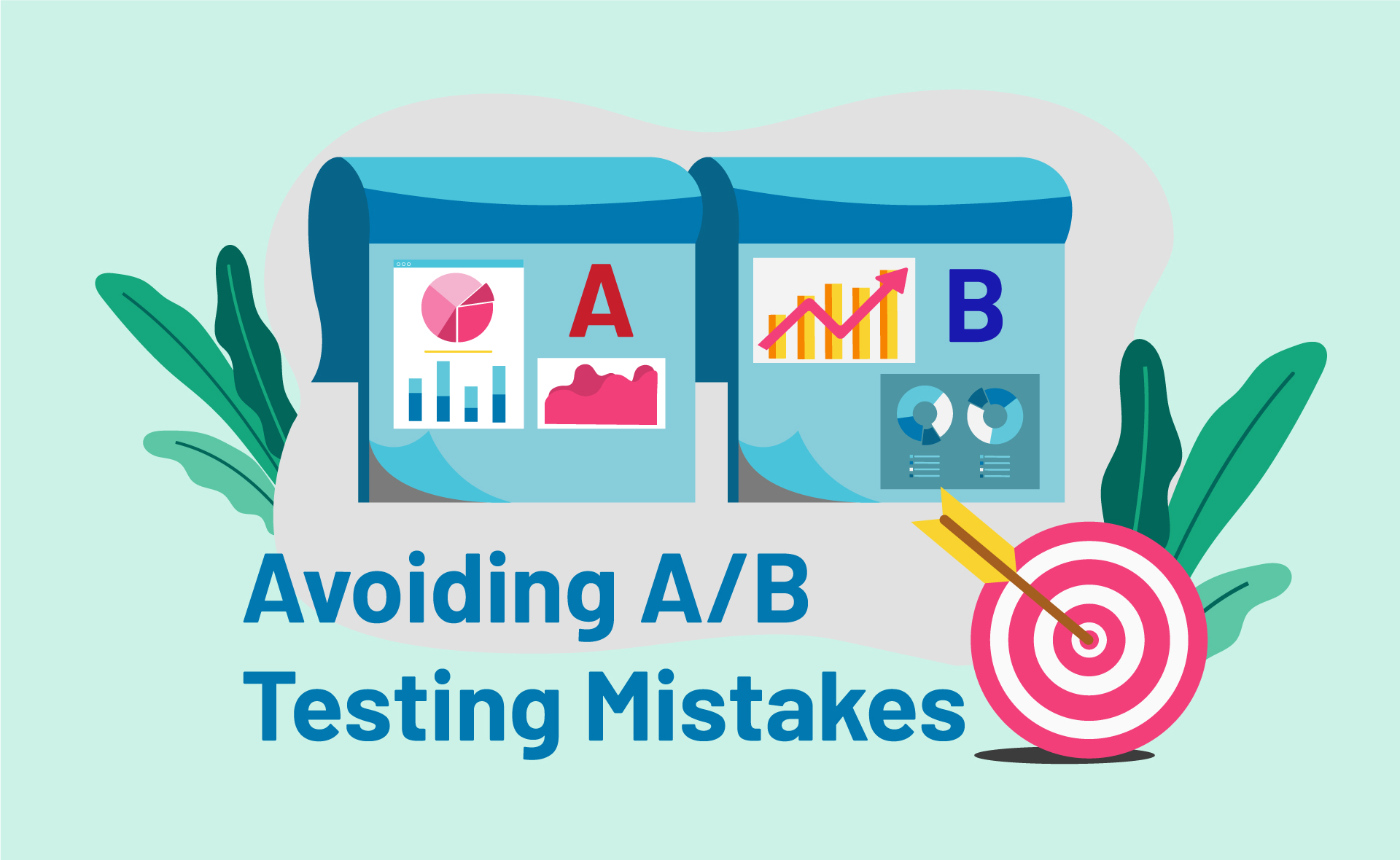A/B testing, or split testing, is a tool we often use for conversion rate optimization (CRO). A/B testing generally involves running tests of two different landing page versions to compare headlines, text, or other variables to find what best resonates with users, resulting in the most conversions. Conducting a successful A/B test can come with challenges. Knowing what to watch for can keep you from getting inaccurate and misleading test results.
Let’s look at some of these A/B testing challenges and ways to avoid these pitfalls.
1. Sample Size Errors
The first challenge most will face with A/B testing is figuring out the right sample size. If your sample is too small, your results may not be statistically significant. If it is too large, you risk wasting resources.
Avoiding Sample Size Errors in Your Split Test
Use A/B testing calculators available online to estimate the minimum number of samples you need for statistically significant results. Ensure your test runs long enough to capture user behavior accurately.
2. Ignoring Statistical Significance
Don’t overlook statistical significance. It is a vital aspect of A/B testing; when ignored, your test results may be due to chance rather than because of actual differences between your variants.
Calculate Statistical Significance for Conversion Optimization
Ensure your A/B test reaches a statistical significance level of at least 95%. Meaning there’s a 95% probability that the results are not due to chance. To calculate statistical significance, you can use online tools or statistical software.
TIP: A great way to avoid the first two errors is to use an A/B testing software. These platforms can calculate everything for you and help you avoid errors in your test. A couple available are Optimizely and VWO
3. Cherry-Picking Results
We’ve all been there with A/B testing; you see that your new variant outperforms the old, and you are ready to declare a winner and stop the test. This is usually due to our egos or just being in a rush to get more conversions. This practice of cherry-picking doesn’t account for fluctuation in user behavior over time and can lead to inaccurate results.
Make Sure You Choose The Winning Version
It can be challenging, but be patient with your A/B test. Allowing your test to run its course will account for any fluctuations in user behavior to level out and provide more stable and reliable results.
4. Overcomplicating the Test
Adding too many variables to your A/B test can complicate the process and make it harder to pinpoint what caused any observed changes in user behavior. Conversion rate optimization (CRO) can be exciting. You may have many ideas for your page, but don’t try all your variables at once. You may end up not knowing why your page is performing better, and can cause you to lose conversions later on when you decide to make any changes.
Keep Your Split Test Simple
Test one variable at a time to identify what influences your users’ behavior. This approach, known as “isolation testing,” helps maintain the integrity of your results.
5. Ignoring External Factors
External factors like holidays, weekends, or significant world events can impact user behavior and skew your A/B test results.
Account for External Factors in A/B Testing
Monitor external factors closely and account for them in your analysis. If your test coincides with a significant event, consider rerunning it during a more neutral period to confirm your results.
Getting Accurate Results When A/B Testing
Being aware of these common mistakes and adopting the tips above, you can ensure your A/B testing process accurately reflects your users’ behavior. Your A/B test results can improve conversions on your website, give you insights into your audience, and help inform strategy decisions you make in the future.





